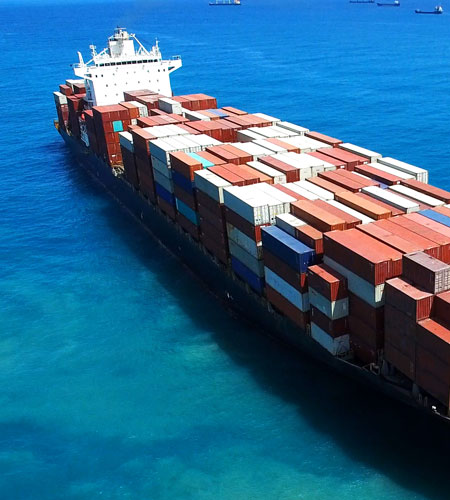By Cherie Gopie
Vessel abandonment is a problem that concerns marine conservationists and coastal communities around the world. In fact, it is not uncommon for vessels to be abandoned throughout the world including in the territorial waters of Trinidad and Tobago due largely to the expense in maintaining and disposing of them properly. Some abandoned ships however, can pose a hazard to navigation and the environment. Once case that could have represented an extreme example of vessel abandonment was that of the São Paulo. The vessel, the São Paulo was once a majestic 34,000 ton, 870 feet aircraft carrier servicing the Brazilian navy. It is now at the bottom of the ocean, after being denied docking and was subsequently left in the South Atlantic Ocean. It found itself in some controversy leading up to its demise.
It was reported that Brazil had sold this 60-year-old vessel for scrap to a Turkish shipyard in 2021. In August 2022, the vessel embarked for Turkey from a naval base in Rio de Janeiro. However, while it was crossing the Atlantic, Turkey rescinded its permission to enter, alleging that Brazil did not show that the vessel was free of asbestos which is toxic mineral used in the construction of many older ships. The vessel turned around. In September, however, a port on the coast of Pernambuco state of Brazil blocked the ship from docking. The port’s position was that it was highly risky that the vessel would be abandoned, leaving port authorities pay for moving it (which was potentially extremely expensive to do) and managing the asbestos issue. The vessel was left circling off the Brazilian coast. On January 20th, 2023. Brazil’s navy announced that it had pushed the ship out to international waters due to the risk that the ship, which had incurred hull damage, could have run aground or sank on the Brazilian coast, threatening other boats and coastal wildlife. It has been reported that Brazil’s public prosecutor filed a civil case against the navy, seeking a federal court to order an immediate halt to any plans to detonate the ship due to environmental concerns. Despite this suit being filed, the Brazilian Navy announced the sinking of the ex-aircraft carrier off the coast of Brazil in the Atlantic Ocean on February 3rd, 2023.
Usually vessels of that size are not simply abandoned at sea due to their valuable metals such as steel which can be salvaged and resold. According to our laws, an owner of a vessel has a statutory and common law obligation to ensure that a vessel is seaworthy before embarking on any journey at sea. Seaworthiness means that “The ship must be reasonably fit in all respects. She must be competent in hull to encounter the ordinary perils of the seas and properly equipped with the necessary tackle, stores, supplies, provisions, medicines and other things requisite for the safety of the voyage and those on board her, and she must have her engines and boilers in sound and proper condition, and also an adequate supply of fuel for the voyage.” However, when a ship is no longer useful to its owner, either becoming unseaworthy following an accident at sea or when its owner finds repairs and maintenance costs have become too costly, the vessel becomes a wreck.
This begs the question, what happens when a vessel is abandoned? According to our Harbours Act, the Harbour Master of any harbour can remove a vessel or part of a vessel sunk or aground in such harbour and may cause the vessel, with all its tackle, apparel and furniture, and all merchandise, goods and articles found on board to be sold by public auction and after deducting all the expenses of removal and sale, shall pay the balance, if any, to the Comptroller of Accounts, for the use of the owner (if claimed within the period of twelve months from the sale). If the expenses of removal and sale exceed the proceeds of sale, the Harbour Master may, by an action at law, recover them from the owner or any part owner of the vessel.
In some countries, the onus is squarely placed on the boat owner to remove its vessel or face severe penalties. In Trinidad and Tobago, however, we do not have such penalties. The Director of Maritime Services is empowered under the Shipping Act of Trinidad and Tobago to exercise general direction and supervision over all matters relating to wrecks and salvage. There have been exercises conducted to assess the wrecks in territorial waters of Trinidad and Tobago but removing such wrecks can be quite costly.
There have been calls for legislative revision in Trinidad and Tobago. In this regard, the case of the São Paulo, though unusual, brings into focus the potential environmental and legal complications when a vessel finds itself without a home.
Disclaimer: This Document Provides General Guidance Only And Nothing In This Document Constitutes Legal Advice. Should You Require Specific Assistance, Please Contact Your Attorney-At-Law.


